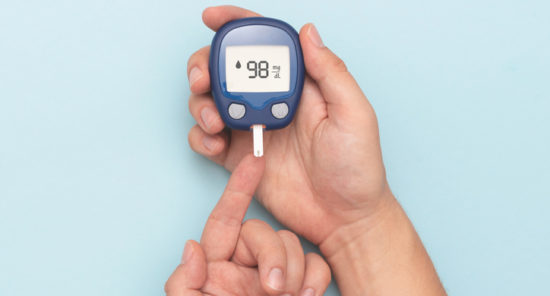Credit: Original article published here.“Gout is a chronic disease that can be effectively managed with long-term urate-lowering therapy. However, it is frequently portrayed on screen as an acute disease caused by a poor diet that should be managed with lifestyle change,” authors of a recent study published in Arthritis Care & Research wrote. Therefore, researchers investigated the impact of a fictional television depiction of gout on perceptions of the disease and its management. The randomized, controlled, single-blind trial involved 200 members of the public who watched a 19-minute commercial television comedy episode that depicted gout as an acute disease caused by poor diet and managed through lifestyle change, or a control episode from the same television series that did not mention gout or other diseases. Participants then completed a survey about their perceptions of gout, its likely causes, and management strategies. The results of the study showed that participants who watched the gout episode had a greater perception of the consequences of gout compared with the control group. They were also more likely to believe that poor eating habits were the most important cause of gout. Participants watching the gout episode believed that a change in diet would be a
Credit: Original article published here.Although gout is more prevalent in men, recent research has suggested that gender differences may exist in the way that the condition is perceived and managed. In a recent study published in BMC Musculoskeletal Disorders, researchers sought to examine gender differences in patients with gout in terms of self-reported disease severity, illness perceptions, impact on daily activities and quality of life, advice from health care professionals, and dietary and alcohol habits. The study examined adult patients with gout who were identified in primary and secondary care in Sweden between 2015 and 2017. A total of 1,589 patients were sent a questionnaire about their demographics, gout disease severity, illness perceptions (using the Brief Illness Perception Questionnaire), and disease management. Of these patients, 868 patients responded to the questionnaire, including 177 women and 691 men. The researchers used t-tests, chi-square tests, analysis of variance, and linear regression models to compare gender differences. The results of the study suggested that women with gout experienced more severe symptoms, including daily activities such as sleeping and walking, and had worse quality of life compared with men. Despite this, women received less advice regarding weight reduction compared with men, even though a
Credit: Original article published here.Spinal gout is a rare form of gouty arthritis that affects the spine, with no definite methods for its treatment. However, a recent study in the Journal of Orthopaedic Surgery and Research aimed to assess the effectiveness of posterior decompression, fusion, and fixation in treating spinal gout. “Due to the absence of gout nodules on the body surface, spinal gout usually does not have the typical clinical manifestations of peripheral gouty arthritis, and its symptoms and imaging manifestations are easy to be confused with tumors, infections, and other diseases,” the researchers wrote, “so there is a lack of effective diagnosis and treatment measures and standards, which brings difficulties to the diagnosis and treatment of spinal gout.” Researchers conducted a case series of 7 male patients who underwent this procedure between January 2016 and January 2020. Physical examination, radiography, CT, MRI, Japanese Orthopaedic Association (JOA) score, and visual analog scale (VAS) score were used to evaluate the effectiveness of the treatment, with a follow-up at 12 months after the operation. The results of the study showed that the JOA score improved significantly from 13.43 preoperatively to 24.43 postoperatively (P=.004). The VAS score also improved significantly from 7.43
Credit: Original article published here.Gout is a common form of arthritis that occurs when uric acid crystals build up in the joints, leading to inflammation and intense pain. Chronic kidney disease (CKD) is another prevalent condition that affects the kidneys’ ability to filter waste products from the blood, resulting in the accumulation of toxins in the body. According to a recent study in Kidney Diseases, diagnosing kidney injury in patients with gout is often delayed, highlighting the need for better diagnostic tools. The study aimed to determine the characteristics of gout patients with CKD using musculoskeletal ultrasound (MSUS) and evaluate whether MSUS could be used to assess kidney injury and predict renal outcomes in gout patients. The study included 176 patients with gout, categorized into 2 groups: those with and without CKD. The researchers collected clinical information, laboratory indicators, and MSUS findings and compared them between the 2 groups. They also applied multivariate logistic regression to identify risk factors for clinical and MSUS characteristics in both groups. Regarding the results of the study, the researchers wrote: “After adjusting for confounders, the gout patients with CKD showed more frequent episodes in the previous year, higher ultrasound semiquantitative scores, and more tophi
Credit: Original article published here.By 2040, chronic kidney disease (CKD) is projected to be one of the top four leading causes of potential years of life lost. CKD is associated with various comorbidities and complications, including secondary hyperparathyroidism (SHPT) and vitamin D insufficiency (VDI). As patients experience decline in kidney function, there are significant alterations in the metabolism of calcium, phosphorus, and vitamin D that cause increased production and secretion of parathyroid hormone (PTH). The combination of decreased kidney function, mineral abnormalities, and high rates of comorbidities are associated with reduced quality of life for many patients. SHPT develops as a result of abnormalities in these parameters. Low levels of serum total 25-hydroxyvitamin D (25D) and 1,25-dihydroxyvitamin D play a major role in the progression of SHPT. Concurrent diagnoses of CKD and SHPT have been linked to increased risk of progression of kidney disease, cardiovascular disease, and mortality. Patients with CKD and SHPT have significantly higher medical costs and use of health care resources compared with patients with CKD alone. Poor vitamin D status and elevated levels of PTH commonly occur in patients with stage 3 to 5 CKD, and can emerge as early as stage 2. Early and sustained
Credit: Original article published here.Patients with glomerular disease may experience acute medical complications such as anasarca, infections, acute kidney injury, thromboembolism, and cardiovascualr events that require utilization of acute care (emergency department [ED] visit or hospitalization). In addition, patients with glomerular disease being treated with immunosuppressive therapies commonly experience infections that can result in utilization of acute care. According to Jill R. Krissberg, MD, MS, and colleagues, the risk of utilization of acute care may be affected by race, ethnicity, and socioeconomic status (SES). The researchers conducted a prospective cohort study designed to compare rates of acute care utilization across racial and ethnic groups in adults and children with glomerular disease in the CureGN (Cure Glomerulonephropathy) cohort. They sought to test the hypothesis that rates of acute care utilization would be increased among Black or Hispanic patients but that lower SES and more severe glomerular disease in those groups would explain any observed differences. Results of the study were reported in the American Journal of Kidney Diseases [2023;81(3):318-328]. The study cohort included 1456 adults and 768 children with biopsy-proven glomerular disease enrolled in the CureGN cohort. The study exposure was race and ethnicity as a participant-reported social factor. Race and
Credit: Original article published here.Sodium-glucose transport protein 2 (SGLT2) inhibitors (SGLT2i), or gliflozins, block SGLT2 cotransporters in the proximal tubules and reduce renal glucose and sodium reabsorption.1 Reduced reabsorption of sodium results in natriuresis, which, through tubuloglomerular feedback, causes a reduction of intraglomerular pressure. SGLT2i have been shown to not only slow kidney progression in patients with chronic kidney disease regardless of diabetes status, but also improve glucose control, reduce the risk of heart failure, and reduce blood pressure, and they do so in a cost-effective manner.2 The use of SGLT2i has been limited despite approval in the United States since 2013 (canagliflozin). One important factor, which research suggests might be a myth, is that underutilization of SGLT2i therapy is due to their high cost or high copayments. Two recent studies have reported on utilization of SGLT2i where cost was not a factor, namely the US Department of Veterans Affairs (VA), where prescriptions are free. The first study by Mahtta et al looked at SGLT2i use in 537,980 patients with atherosclerotic cardiovascular disease (ASCVD) and type 2 diabetes mellitus (T2DM) in 130 VA facilities.3 They reported that approximately 11% of patients were on SGLT2i therapy. Surprisingly, among individuals with an
Credit: Original article published here.There is an association between type 2 diabetes and a higher risk of developing kidney failure. Helena Bleken Østergaard, MD, and colleagues conducted a study designed to develop and validate a decision support tool to aid in estimating the 10-year and lifetime risks among individuals with type 2 diabetes of developing kidney failure. The researchers also sought to examine individual treatment effects of preventive medication in that patient population. Results were reported in the Clinical Journal of the American Society of Nephrology [2022;17(12):1783-1791]. The researchers utilized data from the Swedish National Diabetes Register for 2002-2019 on 707,077 individuals with prevalent and incident type 2 diabetes to develop the prediction algorithm. Kidney failure was defined as the first occurrence of kidney transplantation, long-term dialysis, or persistent estimated glomerular filtration rate <15 mL/min/1.73 m2. Using routinely available predictors, two Cox proportional regression functions for kidney failure and all-cause mortality as respective end points were developed. The functions were combined into life tables to calculate the predicted survival without kidney failure while using all-cause mortality as the competing outcome. A cohort of 256,265 individuals with incident type 2 diabetes from the Scottish Care Information Database between 2004 and 2019
Credit: Original article published here.Management of patients with anemia of chronic kidney disease (CKD) seeks to reduce red blood cell transfusions and avoid complications such as allosensitization. Researchers, led by Vivekanand Jha, MBBS, MD, DM, PhD, conducted an analysis of data on red blood cell transfusion needs in patients with CKD on and not on dialysis in the ASCEND-D and ASCEND-ND trials. Trial participants were treated with daprodustat, a novel hypoxia inducible factor prolyl hydroxylase inhibitor, or with erythropoiesis-stimulating agents (ESAs). Results were reported during a poster session at the National Kidney Foundation Spring Clinical Meetings 2023. The poster was titled The Effects of Daprodustat on Blood Transfusion Rates in the ASCEND-D and -ND Trials. The analysis included data on rates of red blood cell transfusions (events per 100 patient-years) in the ASCEND-D and ASCEND-ND trials and in the ASCEND-D ESA hyporesponder (ESA-HR) subgroup (baseline ESA-resistance index >2.0/>450 U/kg epoetin per week). In prespecified analyses, adjustments in Cox proportional model-estimated hazard ratios (HR) included treatment/region, dialysis type in ASCEND-D participants, and randomization-ESA use in ASCEND-ND trial participants. In both trials, red blood cell transfusions (≥5%) and overall red blood cell transfusion rates were numerically lower in patients in the daprodustat
Credit: Original article published here.According to Jake Hunnicutt, PhD, and colleagues, there are few data on the use of red blood cell transfusion among patients with anemia and nondialysis dependent chronic kidney disease (CKD) in the United States. Data on how the rates of red blood cell transfusion vary by hemoglobin level are also limited. During a poster session at the National Kidney Foundation Spring Clinical Meetings 2023, the researchers presented data on the rate of red blood cell transfusions and associated complications from 2017 to 2019. The poster was titled Red Blood Cell (RBC) Transfusion Use Varies by Baseline Hemoglobin (Hb) and Is Associated With Posttransfusion Hyperkalemia and Hospitalization Within 30 Days in US Patients With Stage 3-5 CKD and Anemia. The retrospective cohort study utilized Optum’s deidentified Integrated Claims-Clinical dataset. Inclusion criteria were hemoglobin measure (index date), prior evidence of stage 3-5 CKD, and anemia (defined as treatment for anemia or baseline hemoglobin <12 g/dL for women or <13 g/dL for men). Analyses were stratified by insurance type (commercial or Medicare Advantage [MA]). Associations between baseline hemoglobin and red blood cell transfusion events within 6 months were quantified using estimated adjusted rate ratios (aRR) and 95% CIs. Claims











